Paul Scharff's Blog, page 6
May 26, 2013
Simon Barrett BloggerNews.Net Coming Really Soon: Murder In McHenry by Paul Scharff and Keith Bettinger
Posted on March 19th, 2013
Coming Really Soon: Murder In McHenry by Paul Scharff and Keith Bettinger
Simon wrote this article a week prior to my book release.
http://www.bloggernews.net/128986

Simon Barrett BloggerNews.Net Coming Soon: A Book by Paul Scharff About His Father’s 1981 Murder
Posted on Oct 20, 2012
BloggerNews.net
This article was written by Simon Barrett. He wrote this article about Murder In McHenry that was coming out in a few months.
http://www.bloggernews.net/128625

Simon Barrett BloggerNews.Net Cold Cases When Is Just Too Cold?
Posted on February 27th, 2011
BloggerNews.net
This article was written by Simon Barrett. He wrote this article about another cold case that was resolved 50 years later. He was doing a comparison to my father’s cold case.
http://www.bloggernews.net/126123

Simon Barrett BloggerNews.Net Ronald Scharff & Patricia Freeman The Only Victims?
July 23rd, 2009
BloggerNews.net
This article was written by Simon Barrett. He wrote this article about Larry Neumann and his wealth. He had a Trust Fund that his father left him but chose to kill and hurt people because he liked it.
http://www.bloggernews.net/121681

Simon Barret BloggerNews.net Ronald Scharff & Patricia Freeman – A Cold Case Once Again?
April 14th, 2009
BloggerNews.net
This article was written by Simon Barrett. He wrote this article in response of me calling him and telling him that the investigation has been scaled back. Simon contacted both Andrew Zinke, lead investigator, and Keith Nygren, Sheriff.
http://www.bloggernews.net/120497

May 22, 2013
McHenry Deputies and Murder In McHenry
In promoting my father’s story I get to speak to a lot of people. I really enjoy it, and I get to talk to all different kinds of people. The last few weeks the people I’ve been talking to are deputies with the McHenry County Sheriff’s Department. Yes, the book Murder In McHenry is making its way around the Sheriff’s office. I think it’s excellent that some of the deputies want to share my story.
It means a lot to me. As you can imagine, I have not been a fan of law enforcement. I think it’s understandable but it’s a tough way to live. It is true that it was the McHenry County Sheriff’s office that victimized the Scharff and Freeman families. It is also true that I’ve gotten an immense amount help from former cops in my father’s case. True crime author Denny Griffin and my co-author Keith Bettinger are both retired cops. Dennis Arnoldy, who was a big help, retired from the FBI. And there were others that either directly or indirectly helped. I still have to remind myself that all law enforcement is not bad but I’m getting better with it.
I think it’s important to note that my battle is not with everyone that wears a badge. My battles with those that were connected with the Outfit back in the day and those that want to hide it today. I was speaking to one deputy, and they brought up a valid point or a concern actually. They wondered while they were driving down the street and in particular if they had to drive through Lakemoor, what people were thinking of them because of my book. I immediately pondered that thought. It gave me a shiver down my spine at the thought of somebody saying or calling a deputy corrupt or something like it, when all they do is work hard and give back to the community. That is why I’m writing this blog today.
I’m not saying that all deputies are not doing dirt, because I think that some are. However, I think a majority of them are what we expect, unselfish, dedicated, tireless, and with integrity. As citizens it’s important for us not to classify someone as being corrupt because of what they do for employment. Remember where some of these people work. They work at the Sheriff’s office. I would suggest that they are probably victims to. When there’s corruption at the top level, a culture emerges that teaches others that it’s best to play ball. When talking to these deputies I felt that it is part of their culture at work. In this environment you don’t question anything or you could be subjected to being bullied by your higher-ups. Does that sound like a place where you want to work?
That is not a place for anyone to work especially those that risk their lives to serve the public. These deputies deserve more and so do we. Corruption won’t be easy to root out. When we find it, we need to jump on it and not let it sit. That is why my father’s story is so important to tell. We have examples of obvious mob connection from the past, and the current administration that does not want to talk about it. Even trying to control what you and I get to know.
Let’s agree that we all are victimized by failed systems from all sides of the fence. Let’s demand more for our community and for our law enforcement. Educates ourselves on the current events of our community and arm yourself with knowledge. Read, Cal Skinner’s blog at mchenrycountyblog.com or Gus Philpott’s blog the woodstockadvocate.com. If you have never read them before I think that you will be shocked and appalled in no time at all. Do a Search on Zinke or Nygren. Then when everyone is mad enough, work together and use your vote to make change. Is everyone mad enough yet?

May 15, 2013
How does the movie CASINO relate to the book MURDER IN MCHENRY PART 2
The movie CASINO was filled with fictitious characters that were based on actual people. The two main characters of the movie Robert DeNiro and Joe Pesci, where based on Frank “Lefty” Rosenthal and Tony Spilotro. Frank Rosenthal was said to be “The greatest living expert on sports gambling” by Sports Illustrated. He is credited with bringing sports betting to Las Vegas casinos in the ’70s. The reality was he was the Chicago Outfit’s man to oversee the Outfit’s interests in four casinos in Las Vegas. Tony Spilotro on the other hand was sent by the Chicago Outfit to Las Vegas to be their enforcer. Robert DeNiro’s character was named Sam “Ace” Rothstein.
Sam Rothstein was based on Frank Rosenthal or “Lefty.” Lefty was originally from Chicago Illinois. He later became connected to the Outfit because of his superior sports betting abilities. His sports betting abilities also got the attention of the law. He got busted in Chicago trying to rig some basketball games. The law might not have of appreciated him but the Outfit did. They sent him to oversee the “skim”.
The “skim” was an elaborate way of taking money out of the casino before it was accounted for. Meyer Lansky, from the New York crime family, is credited for starting the “skim.” This skim would begin where the money was weighed in the casino. In a casino there so much money that a casino had to weigh it to get a real-time estimate of how much money they brought in. The scales in the casino were rigged. They would underreport what was actually taken in and skim right off the top. At every level of the casino where the money would be taking in, there would be another method to skim right more money off the top again. The outfit certainly took in tens of millions and possibly 100 million plus each year. That is what the upper echelon of the Outfit had at stake. That is the reason why they sent their top enforcer, Tony Spilotro, to protect the skim.
Tony Spilotro and his family were all from Chicago. At a young age he got connected to the Outfit. At the age of 18 he started to do some work for a bookie named Sam DeStefano or “Mad Sam.” In short, Mad Sam was one of the most sadistic Associates in the Outfit’s history. And Tony learned all the tricks of the trade from him. The Outfit sent Tony to watch over Lefty and to get things in Vegas in line. He was to watch over the skim by making sure that nobody stole from the casinos. Not the dealers, nor the public. Other duties included, making sure that the bookies, drug dealers, and pimps kicked up to the Outfit. The word even went out to the different mob families throughout the country not to play around in Las Vegas.
In order for Tony to get control over Las Vegas, he was going to need a crew. That’s when he asked Frank Cullotta to come out to Vegas. When Frank arrived in Vegas he started to put his crew together. Most of them came from Chicago. They were later dubbed the Hole the Wall Gang. They were called the Hole in the Wall Gang because they would break in the buildings by punching a hole through the wall or through the roof. They did that so they could bypass the buildings the alarm system. Back then they didn’t have motion detectors so alarm companies would provide security around the doors and the windows of the building. The members of the Hole in the Wall Gang were Wayne Matecki, Leo Guardino, Ernie Davino, Joseph Blasko, and the murderer of my father Larry Neumann.
It was Lefty’s job to run the casinos and make sure they were making plenty of money for the La Costra Nostra across the country. That included families from New York, Los Angeles, Milwaukee, Kansas City, Chicago and others. It was Tony’s job to make sure that Lefty had no problems and to make sure that the streets were kicking up to the Outfit. Frank and his crew carried out the orders for the Outfit through Tony.
So just about everything you see in the movie CASINO, really happened. The scene where Joe Pesci’s character, Nicky Santoro, placed a man’s head in a vice and squeezed until he talked is true. It was in reference to an incident were Billy McCarthy and Jimmy Miraglia wound up killing Ronnie and Phil Scalvo. What happened a few nights previously, is Billy got into a fight with them. This was an act of revenge. The problem was they were associates of the Chicago Outfit and their father was good friend with Tony Accardo the Outfit’s boss. At the time, Billy and Jimmy worked with Frank. They actually use the guns out of Frank’s garage to kill them. Frank may have been with him that night if he wasn’t out on a date with a girl. When the bodies were found, Tony found Frank. Tony told Frank the Outfit thinks that he was with Billy and Jimmy the night the Scalvo brothers were killed. Frank told Tony that he wasn’t, but Tony said it didn’t matter. However, Tony can take care this for Frank, if Frank would help him. He told Frank that he was going to have to help him get the brothers. Frank did and Spilotro was able grab Billy. They tortured Billy for three days, and he would not say who was with them when he killed the Scalvo brothers. That’s when Tony put his head in a vice and turned the vice so tight that his eyeball actually popped out of his head. And only then did Billy give up Jimmy’s name.
In the movie where Joe Pesci’s character, Nicky Santoro and his brother Dominic were shown beaten with bats and buried in a cornfield, most of that was true. In real life it was Tony and Michael Spilotro who flew back to Chicago on the orders of the Outfit. They sense this could be trouble but they were told that Tony was going to become a Capo and Michael was going to be Made. They were taken out to a house in Bensenville, Illinois. They were walked downstairs into a basement. There were a bunch of men that Tony and Michael recognized. The men were there waiting for the Spilotro brothers to arrive. When Michael went to shake the hands of one the men, he noticed that they all were wearing surgical gloves. That’s when the brothers knew it was going to be there last day on earth. Tony asked if he had time to say a prayer and he did. Then all the men in the basement started to beat the brothers to death with their bare fists and kicks. They were later taken out and buried in an Indiana cornfield as portrayed in the movie.
This video is from the National Geographic Channel. A couple of my friends are in this documentary, Frank Cullotta and Dennis Arnoldy. This show goes over the true story about Las Vegas, the mob, and the skim. Frank Rosenthal who has since passed away is also in this show. My father’s killer Larry Neumann is also shown. Please take a look at this video clip, it is excellent and does not have any commercials.
How does the movie CASINO relates to the book MURDER IN MCHENRY PART 1

May 8, 2013
How does the movie CASINO relates to the book MURDER IN MCHENRY PART 1
This week’s blog is going to be part one of two. I’m going to discuss how the movie CASINO relates to my book Murder In McHenry. If you never seen the movie CASINO it is excellent. And it’s also a fun way to learn about what happened with Vegas and the mob. This week’s blog I will be talking about the movie itself. Next week, I will go into the actual events that took place in Vegas. In this blog I am going to tell you a little bit about the movie, the characters, and who they were actually based on. Maybe this weekend you will spend some time and watch the movie. Whether it’s your first time or your hundredth time, I hope to give you a whole new understanding and perspective about the movie.
The movie is based primarily on three major characters. The character Sam “Ace” Rothstein is played by Robert DeNiro. The movie starts with Sam being blown up in his Cadillac. The movie goes back in time to all the events that led up to that day. The real Sam Rothstein, Frank “Lefty” Rosenthal actually did survive a bomb blast in his car.
The role Nicky Santoro was played by Joe Pesci. Nicky was an enforcer back at home in Chicago. Nicky may have been physically small, but he was one of the tough guys and very sadistic. But that is exactly why the Chicago Outfit sent Nicky out to Las Vegas. To protect and oversee Sam Rothstein and the Las Vegas “skim.”
Ginger McKenna was played by Sharon Stone. Ginger caught the attention of Lefty, and later were married. However she could never escape her past. She was a hustler and never really fell in love with Sam.
The movie plays out with the Tangiers Hotel and Casino as the backdrop. The Tangiers was financed through the Teamsters Pension Fund, by the Tangiers owner Philip Green. Philip Green was the Chief Executive Officer of the real estate holding company and he was the one that penned the Tangiers loan with the Teamsters. What Mr. Greene did not realize, he was just a straw man. The Teamsters loans were not arranged by him as he thought, but they were arranged by the Chicago Outfit.
The man that was really in charge of the operation was Sam Rothstein. He was hand selected by the Chicago Outfit to run all the gaming operations in the Tangiers. Sam was one of the best sports bettors in the whole country. Although the Outfit was completely confident in the abilities of Sam Rothstein to bring in money to the mob, they were not going to leave anything to chance.
The Outfit sent one of its best enforcers to help and protect the Tangiers operations. Nicky was perfect for this operation. He was tough, sadistic, and he was a made man in the mob.
What was going on with the mob families in Las Vegas at the time was that they were skimming money off the top at the Tangiers. They take money off the casino floor before it could be accounted for and send it to all the various families across the country. The money will be sent to a mobster in Kansas City and he was responsible to make sure everyone gets their cut.
Nothing is simple in the life of crime but it can get a lot more complicated with the realities of the people involved. Nicky becomes attracted to his buddy Sam’s wife, Ginger. Things start to spin out of control. The pressure cooker starts to boil over as the feds come closer and closer to nailing the mob. The bosses at home turned up the heat by demanding that things start to run smoother and a lot more quieter. Watch this movie, entertain yourself while the story is told. And remember almost everything in this movie is true.
Another interesting fact about the movie CASINO; at the end when the bosses decided that some people had to go, it is actually Frank Cullotta on the screen acting as a hitman. He even acted out a murder that he committed. That was the murder of Jerry Lisner. Frank is most likely the only person to act out a murder on the big screen that he actually committed. So the next time that you are watching the ending of the movie CASINO, and you are watching everybody getting whacked, take a look, it’s Frank.
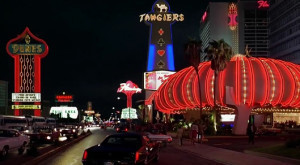
This is the Tangiers Casino that served as the backdrop for the movie CASINO. It was a Teamster Funded Hotel. The Chicago Outfit received loans from the Teamster Pension fund to build the Casino. The Teamster President was “Andy Stone” played by Alan King. Mob and Mob Associates were all in Nevada’s black book and barred from walking into casinos. The Outfit had to have straw man fronting their operation. It was real estate investor Phillip Green played by Kevin Pallak.
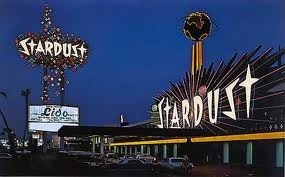
In the movie, Sam Rothstein was responsible for the Tangiers Hotel and Casino. Frank Rosenthal was actually in charge of four casino and hotels. The Stardust, Fremont, Marina, and Hacienda were all Outfit casino’s and Frank Rosenthal was in charge of them all. Martin Scorsese and Nicholas Pileggi chose to use one casino for the background of the movie vice the actual four. It was thought to be to complicated for the movie.

This is Robert DeNiro in the movie CASINO as Sam “Ace” Rothstein. The “Sports Gambling Mogul,” sent by the Chicago Outfit to overlook the Tangiers Casino’s skim operation.

This is the real Sam Rothstein, Frank “Lefty” Rosenthal. He would know everything about any game that he was betting on. He would know if the players were on drugs or if a quarterback’s girlfriend was pregnant or anything else that would effect a game’s outcome. He would never get his gaming license in Las Vegas from the Nevada Gaming Commission. He was once arrested for fixing a game and most importantly he was close acquaintances with Tony Spilotro and other Outfit associates. He escaped being blown up in his car, someone had planted a bomb in it. Lefty would not cooperate with the investigation and it is not known who did it. However it is often thought that it was Tony Spilotro.
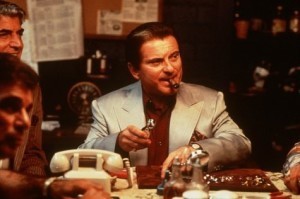
This is Joe Pesci playing the role of Nicky Santoro in the movie CASINO. When Frank Collotta was asked how well Joe Pesci played Tony Spilotro, Frank replied very well. He was perfect on the height and even the little touch of gray hair in the front of his head. The only thing that Frank said does not match was the language. Tony would not swear like that, if at all. He was more often a gentleman if he was not trying to hurt or kill you.
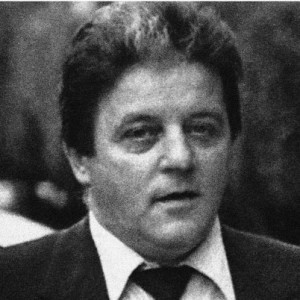
The role of Nicky Santoro was based on Tony Spilotro. You can see that Tony Spilotro did have that touch of gray in the front of his head. He was only 5’5″ but he was extremely tough, even as a kid. His older brothers would pay anyone $5 to $10 to fight their little brother. He would torture people when he had too. Something he learned by the best, or by the worst depending on how you look at this. He was brought up through the ranks working for a sadistic bookie named “Mad” Sam DeStefano. The scene with the guys head in the vice, was true. He tortured Billy McCarthy for three days and he would not talk. That is when Tony put Billy’s head in the vice and popped his eyeball out when cranking down on the vice. In 1986 Tony, like the character Nicky Santoro, he was beaten to death with his brother and they were both thrown in a hole and buried in a cornfield in Indiana. A farmer found them because he saw the disturbed ground. Had they buried the bodies a short distance away, they may have never been found. It would have been on Joe Aiuppa’s farm who was the Outfit boss at the time.
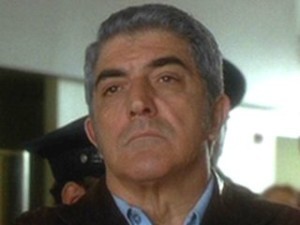
Frank Vincent’s role of Frank Marino. Frank Marino was Nicky Santoro’s Lieutenant and the leader of the Hole in the Wall Gang.
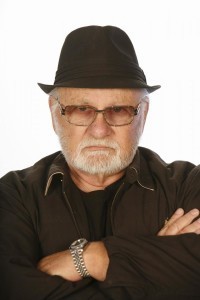
Frank Marino was based loosely on Frank Cullotta. Frank was a childhood friend of Tony Spilotro’s. They grew up together in the area called the patch, in Chicago. That child friendship lasted all the way into adulthood. Tony needed to enforce the Chicago Outfit’s will to protect the “skim” operation in Las Vegas. He was going to need help with that so he asked Frank to come out to Las Vegas. Frank did and brought a crew out there with him. They needed to earn a living and Tony obliged them by allowing them to steal. Frank headed up a crew called the Hole in the Wall Gang. They earned the nickname by busting through walls or roofs to bypass the alarm systems that were installed in businesses back then. The murderer of my father, Larry Neumann was a member of that gang.

Sharon Stone played the role of Ginger McKenna. Ginger McKenna was a former Las Vegas showgirl that knew how to hustle what she wanted out of her marks. She was beautiful and got the attention of Sam Rothstein who later married her in the movie. She also won the attention of Nicky Santoro that started the affair that help tear apart the La Costra Nostra in Las Vegas.

Ginger McKenna was based on Geraldine McGee Rosenthal. What was portrayed in the movie was what she was in real life. My co-author had the pleasure of knowing the assistant to her husband Frank “Lefty” Rosenthal. She said that Frank really did love her and was crushed upon learning of her death. Frank’s assistant said that the real life Geraldine was one of the most beautiful woman that she had ever met. Although Sharon Stone is known for her beauty, she said that she could not hold a candle to the beauty of the real Ginger McKenna.
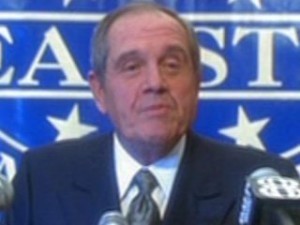
Andy Stone was played by Alan King. Alan King was the high ranking Teamster Union representative. He was pulling the strings behind the scenes with mob and Phillip Green’s real estate holding company for the Tangier’s loan from the Teamsters Pension Fund. When Remo orders the hit of all those connected to the skim, Andy Stone was one the first people to get it.
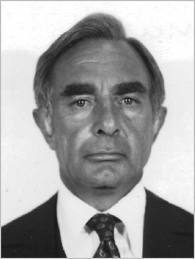
Andy Stone was based on Allen Dorfman. He was a high ranking Teamster member, who was also good friends with Jimmy Hoffa. His step father was Paul “Red” Dorfman, who headed the Chicago Waste Handler’s Union and a member of the Chicago Outfit. Before becoming a Teamster he was in the United States Marines. He even earned the Silver Star in the heroic battle of Iwo Jima in Japan. He got his start with the Teamsters by starting Union Insurance Agency. His company provided insurance benefits to the Teamsters. He would pay huge kickbacks to Jimmy Hoffa from his insurance company. While with the Teamsters he got involved in approving Teamster backed loans. He took over approving these loans from Jimmy Hoffa when he was sent to prison. Later he would be charged with embezzlement of Teamster’s Money with other Teamster higher up’s and the Outfit’s Joey “the Clown” Lombardo. Lombardo and Dorfman were later convicted of bribing Nevada Senator Howard Cannon in relation to the case. Just like in the movie with Remo placing a hit on Andy Stone, it is believed that Joey Aiuppa ordered a hit on Dorfman. Allen Dorfman was killed on January 23rd, in the Hyatt parking lot in Lincolnwood, Illinois. He was gunned down at fear that he may cooperate with the Feds to avoid a 55 year prison sentence.

Phillip Green was played by Kevin Pollak. He was the Straight man in the operation. He was squeaky clean and the Nevada Gaming Commission would offer him a Gaming License. He was under the impression that he obtained the loan for the Tangiers on his own through the Teamster’s Pension Fund. He thought that he was in charge of the operation until Sam Rothstein told him that he was in charge.

Phillip Green was based on Allen Glick. Allen Glick was a Real Estate investor from San Diego. Through his holding company the Argent Corporation he owned the Stardust, Hacienda, Fremont, and Marina. The name Argent Corporation came from Allen’s initials “ARG” and “ENT” from the word enterprises. Allen really was a straw man. He had no idea that the mob was the one pulling the strings in getting his load through the Teamsters. Allen was not part of the skim nor was he even aware that it was going on. He had a rude awakening when Frank “Lefty” Rosenthal told him that he better stay out of his way. He was in charge and not Allen. There was one thing that the mob did not know about Argent was that there may have been a silent partner. Allen denied that they were partners so partner went to sue Allen Glick and the Argent Corporation. Before the lawsuit goes forward Joe Pesci’s character Nicky Santoro goes into the ladies house and slit’s her throat. This actually happened. Tony Spilotro killed Allen Glick’s partner Tamara Rand.
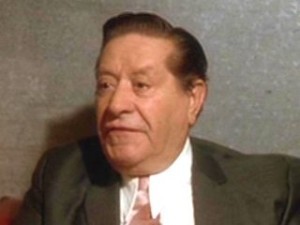
Remo Gaggi was played by Pasquale Cajano. Remo was the Outfit boss back at home in Chicago. He oversaw all Outfit operations. When the cops were busting in on the “skim,” he was the one to give out the order to start tying up loose ends. Better to be safe than sorry.
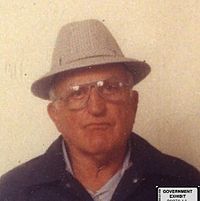
Remo Gaggi was based on the Chicago Outfit boss Joe “Doves” Aiuppa. He was a very tough man as he was a boxer in his early years. He received the nickname “Dove” for getting busted in 1962 with over 500 dead doves in his car. The limit during hunting season was 24. He received three months jail time for this infraction. He earned his way up by becoming a bookie and running the manufacturing of gambling machines that were used illegally and legally all around the country. He was not one of the smarter Outfit bosses but certainly one of the tougher ones. It is believed that he was responsible the murder of former Outfit boss Sam Giancona. His reasons for the murder could have been out of Sam’s refusal to kick back up to the Outfit his Mexican gambling operation, which at the time he was exiled to Mexico by the Outfit. Another possible reason was in 1975 the Feds brought him in from Mexico to discuss the mob’s involvement in the Fidel Castro and Cuba operations. He was later convicted of his role in the Las Vegas skim. He received 28 years in June of 1986. He may have blamed Tony Spilotro and ordered the hit on him and his brother Michael. He was released from prison in 1996 and died on February 22, 1997. He is buried in the Queen of Heaven Cemetery in Hillside, IL. The same place that my father was buried 16 years earlier.
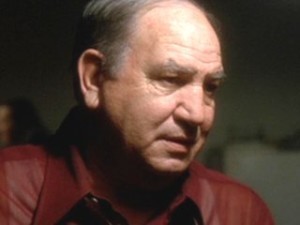
Joseph Rigano played the role of Vincent Borelli. Vincent was the Kansas City Boss. His Underboss Artie Piscano was in charge of dividing up the “skim” among the mob families across the country.

Vincent Borelli was based on Nicholas Civella. Nicholas was the Boss of the Kansas City family. He was arrested and convicted of illegal gambling and bribery. He was medically released from prison in 1983. Two weeks later he died of lung cancer. Upon his death his younger brother, Carl “Cork” Civella took over the Kansas City family.

Vinny Vella played the role of Artie Piscano. Artie was a Kansas City mobster. He was in charge of getting the money from the Las Vegas “skim” to all of the other mob families across the country. In the movie he was getting upset. He kept on being sent to Vegas to make sure that no one was “skimming” the “skim.” He was not getting reimbursed for his expenses so he started to keep records. The records were the records that were found by the FBI and used to prosecute the mob.
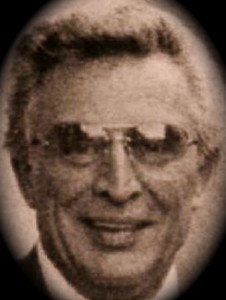
Artie Piscano was based on Carl “Tuffy” DeLuna. He was the Underboss to the Kansas City family. The Kansas City family reports back to the Chicago Outfit. Carl was trusted across the country by the different families and that is why he was responsible to make sure that each family got there cut. In the movie Artie Piscano was raided by the FBI and he dies from having a heart attack. Before he dies the FBI finds his notes and was able to bring down the Outfit. The real Carl was raided by the FBI but he did not die on the spot from a heart attack. The FBI did find his notes but they were encrypted. They had to figure out what the notes meant by matching it up to recordings of other gangsters and other evidence. In 1979 Carl was sentenced to 30 years for his participation in the Las Vegas “skim.” He was released in from prison in 1998. He later died in Kansas City in 2008.
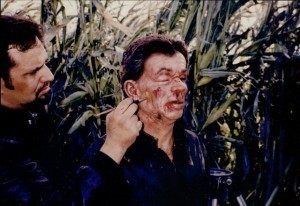
Phillip Suriano played the role of Dominick Santoro, the brother to Nicky Santoro (Joe Pesci’s character). His most remember able scene that he was in was at the end of the movie. It is when he and his brother Nicky was taken to the cornfield and beaten to death with baseball bats and buried alive. Dominick was beaten first so his brother Nicky can watch the whole thing.
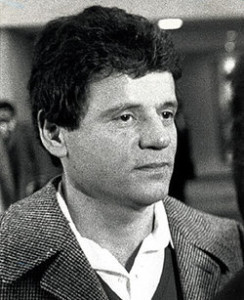
Dominick Santoro was based on Michael Spilotro the real life brother of Tony Spilotro. Michael was an actor prior to getting into the Outfit business. He was good friends with actor Robert Conrad. Through Conrad, he starred in an episode of Magnum PI. Michael was later killed with his brother Tony by the Chicago Outfit. He was told to attend a meeting to where he was told that he was going to be made. He knew that he may be in trouble before he left. He left his jewelry at home and told his wife that if he was not home by 9:00 PM that there was trouble. He never returned home. He was beaten to death in a house in Bensenville, IL and was driven and buried in a cornfield in Indiana.

This is a real photo of Tony Spilotro and his attorney Oscar Goldman. Oscar is one of the few people in the movie that played himself. Oscar was Tony and Frank Rosenthal’s lawyer. Oscar Goldman represented a lot of mobsters. After his career at being a mob lawyer, he became the mayor of Las Vegas.
Part 2 How does the movie CASINO relates to the book MURDER IN MCHENRY

May 1, 2013
From 1893 Chicago to Lakemoor Illinois 1981, the history of the Chicago Outfit
I wrote this piece a while back in hopes of using it for the book. For the direction that we wound up going, it was excluded. I wrote it, because I believe that most people don’t understand how the mob works. I thought it best to explain the history first and then second explain how it relates to you and I. I hear today that people think that corporations act like the mob, but that is incorrect. After prohibition the Chicago Outfit modeled themselves after corporations. It was the Robber Barron Era, much like today. They thought that is would be easier to steal with a pen than with a gun. Do you know the first business that the Outfit got into after prohibition? They got into the milk business. I’m not kidding. And the milk business model is the model that they used over and over again to strong-arm themselves into other markets. People always hear about the Teamsters and the mob, but are unsure how they work together. It is such a huge piece to the working of the mob, that not to understand the Teamsters and the mob, is not to understand the mob. This is more of an article then it is a blog so you’ll need some time to get through it. However if you take the time to read it, you will understand the complete workings of the mob. I’m very proud of this piece and I hope that you enjoy it when you read it.
_____________________________________________________________________________________
Most people, and in particular those of Chicago, New York, and Las Vegas feel that the Mafia or the mob runs in parallel worlds of our own. That is one of the reasons why people are fascinated by mob members and the stories about them. This is certainly not the case, it’s not parallel worlds but one of the same. The mob influence far exceeds the confines of big cities like Chicago and New York. They shaped our culture, our economics and my life personally. To begin to understand their influence on my story is to understand the roots of The Al Capone Gang, The Syndicate, The Chicago Outfit.
Chicago in the early 1900s was bustling with major growth, and getting its roots as being one of the largest business districts in the world. Chicago was a new modern metropolis due to the rebuilding of the city after The Great Chicago Fire. Railcars were the method of shipping most goods throughout the country. The nation’s largest railway hub is in Chicago, IL. In addition, Chicago took advantage of its access to Lake Michigan and the Chicago River. Lake Michigan gave Chicago shipping routes to the Atlantic through the Great Lakes and to the Mississippi and the Chicago River. Later, the city added major airports to the mix of shipping methods, giving Chicago the ability to ship product anywhere in the world. That attracted some of the words largest manufacturing companies to Headquarter in Chicago, because of the vast shipping modes of transportation.
Another powerhouse of industry in Chicago was banking. Chicago hosts the Federal Reserve Bank of Chicago, the Chicago Stock Exchange, the Chicago Mercantile Exchange and the world’s oldest futures and options exchange, the Chicago Board of Trade or CBOT (later becoming part of the Chicago Mercantile Exchange). Chicago today is a player in the global markets and considered one of the top business cities in the world. Most, if not all the world and national banks have a presence in downtown Chicago. The banks finance the growth of the city and Chicago’s commerce. All of this converges in what most Chicagoans and Chicago’s business travelers know as the Chicago Loop.
The Chicago Loop gained its named for the elevated railcars that to this day loop around the downtown Chicago area. What is significant as the revenues of the corporations that transact in this area is that for most of its history it was all part of the First Ward in Chicago. The First ward included the Loop, parts of both the west and south sides of the city. Why is it important to know the ward that had all of this power and money? Because the First Ward was ran by John Coughlin and Michael Kenna. They were two Aldermen that sat on the Chicago City Council. They started their relationship in 1893 and it lasted over a period of fifty years. They were two Aldermen per ward that sat on Chicago City Council back then.
They were the most powerful ward in the Chicago City Council encompassing one of the world’s largest business districts. What relationships could be cultivated, not only on the city level but on the national or even global scale? Would they be Robber Barons, city, state and federal politicians, lawyers, lobbyists, special interest groups, the Chicago Outfit? Were they corruptible? They certainly were.
This is not hard to imagine at all. Look at the state of Illinois today. The city’s dead often vote in most local, state and federal elections. The expression “Vote early and vote often,” coined by Al Capone years ago but still rings with Chicagoans today. Our state governors make our license plates, seeing that in the last three governors including the current as of this writing, two of them are still in prison today. Rod Blodegvich, is the most famous jailed governors at this time, with one of the charges against him is trying to sell the vacant senate seat of President Barrack Obama. To put the level of corruption in Illinois into context, one would say that today’s corruption is the residue of the earlier Chicago corruption. This poses two questions, if it is this bad now what would it take to clean up Chicago politics? And, if it still this bad, how bad was it?
The First Ward Aldermen, John Coughlin and Michael Kenna were nicknamed, Bathhouse Johnny and Hinky Dink Kenna. John Coughlin was called Bathhouse Johnny because he owned a bathhouse at 145 West Madison in the downtown Loop that catered to gamblers and thieves. Michael Kenna was not only the Alderman in the First Ward, but when the wards were reduced to one Alderman per ward he was appointed Ward Committeeman. Through his positions, Hinky Dink Kenna placed hundreds of Chicago public officials, judges, police captains, legislators, and even mayors into their positions. These appointments always served the agenda of someone that knew how to lobby the First Ward Aldermen. Imagine the political infrastructure built, or better said, bought, if one established a relationship with these men.
The bathhouse and saloon that Bathhouse Johnny and Hinky Dink owned was in the part of the Loop called the Levee. The Levee was the red light district of Chicago, infamous for its brothels, saloons, gambling houses and other businesses of ill repute. Giacomo Colosimo better known as Big Jim Colosimo was one such proprietor. He owned a restaurant-cabaret called Colosimo, right in the Levee, and was acquainted with the Aldermen of the First Ward. Big Jim used to work as a Precinct Captain for the Aldermen. Besides big bands and dancers, Big Jim was better known as the owner of many brothels throughout the city. Through ownership of these brothels, Big Jim was able to gain a stake into gambling and racketeering operations as well. He also started to round up all the corner gangs both around and outside the First Ward under his leadership. Big Jim was the first boss of the Syndicate, or later known as The Outfit.
The Syndicate or The Outfit was able to establish many lucrative illegal businesses that operated with the help of the First Ward Aldermen. However, in 1909 Big Jim faced his first challenge that many successful Italian immigrants would have to face. That was the Black Hand. The Black Hand was from the old country, Sicily, and they robbed wealthy Italians. The Black Hand also would extort regular payments from shopkeepers for protection for their businesses. What they were really protecting the shopkeepers from, was the members of the Black Hand themselves. To counteract the Black Hand, Big Jim called upon his nephew in Brooklyn, John Torrio. Big Jim made John Torrio his second in command. They were able to eliminate the Black Hand threat through their own means and bloomed into becoming two of the most noted gangsters at the time. Big Jim and John Torrio opened and ran brothels together, making large sums of cash and buying influence in the First Ward. While enjoying the life in Chicago, Johnny received a call from a New York City gangster named Frankie Yale. Frankie was concerned with a murder investigation in New York City that might entangle one of his guys and he wanted to send him to Chicago. Johnny Torrio knew the man as he used to work for Torrio back in New York. The gentleman was now on his way.
1919 was the year of the arrival from New York of one, Alphonse Gabriel Capone, or better known as Al Capone. Yes, this was the beginning of what would become the story of the most famous gangster in history, Al Capone. Al Capone did not start the Chicago Outfit, but he did lead it to become the most notorious gangster on earth still known today throughout the world. Al got his start as a bartender and bouncer at Big Jim and Bathhouse Johnny’s brothels down in the Levee.
Now, we enter the roaring twenties and prohibition. Prohibition was an obvious business opportunity if you had many brothels, speakeasies, saloons etc., and called many major judicial and political appointees as friends. This would promise unforeseen amounts of profits that later proved to be legendary by any capitalist’s standard. Johnny presented the idea to Big Jim Colosimo.
Big Jim was already enjoying much wealth, political influence, and the largest stake in the Chicago underworld. Entering into the market of bootlegging would most likely start a gang war, mainly with the North Siders led by Dean O’Bannon. However good Big Jim’s reasons were for not entering into this lucrative illegal trade, it would still cost him his life.
On May 11, 1920, Big Jim received a call to come to his restaurant where he was murdered in the foyer of the building. Peoples believe that Johnny Torrio (Big Jim’s nephew by marriage) called on Frankie Yale, the same person that called Johnny on Al Capone’s behalf, to gun down Big Jim. Police question Johnny, Al and Frankie about Big Jim’s murder, but no one was ever charged.
Big Jim had a lavish funeral attended by literally hundreds and hundreds of people. Many of the pallbearers were gangsters, judges, and congressmen. Big Jim was probably the best-connected person in the city of Chicago and now Johnny Torrio would be.
As the United States entered the era of prohibition, The Chicago Outfit as an organization was now ready to utilize its capital to buy politicians, crooked cops and judges. With millions in cash, and all the business partners they needed in and around the city, they were ready to enter the market of bootlegging. Keep in mind, starting with Big Jim’s machine that was making millions in the First Ward alone, the Outfit bought all the connections they garnered for the past thirty years. Whatever Capone’s office in the hotel could not handled, they simply implemented a street fix through their own ranks.
Big Jim was right in his prediction that bootlegging would lead to a gang war with the North SIders. This certainly was the ugly part of the business. This led to Al Capone taking over the Chicago Outfit after Johnny Torrio was badly hurt when the North Siders gunned him down. Torrio survived the assault, moved back to Italy and gave full control of the Chicago Outfit to Al Capone.
The pay back to the North Siders for hitting Johnny Torrio was the St. Valentine Day Massacre on February 14, 1929. It wiped out almost all of the North Side Gang except for Bugs Moran. After the killings, Moran lost his nerve to challenge Capone any further. This move did one major thing in shaping the Chicago Underworld; it solidified all the gangs under one hierarchy, Al Capone and the Chicago Outfit.
This made the Chicago Outfit unique from the mob in New York. An executive board comprised of members of the five crime families operated the mob in New York City. Now knowing this, it makes sense why Al Capone was able to become the most infamous gangster ever. They simply bought off the City of Chicago. It was not that they could openly disobey the law, but if they ran into a problem, they paid money out to all who had their hands out. They connected with those at the very top of Chicago’s government who helped make their problems go away. They made hundreds of millions a year during the best years of prohibition, so paying out graft was just a business expense. They eliminated most of their enemies and went unchallenged in the mid-west. The Outfit extended itself across the country to everything west of Chicago and south to Florida.
A new era and the greatest transition for the Chicago Outfit occurred during post prohibition. Prohibition was ending and the Outfit saw it coming. Alcohol would be a legitimate business again. It would not have the same level of profits that it had during the prohibition era. The Outfit needed to find a new course of action and it did. Al Capone felt that the Robber Barons of the time were in the right rackets. John D. Rockefeller, Cornelius Vanderbilt, Andrew Carnegie, JP Morgan, John Astor and the many other industrialists that ruled their markets with iron fists inspired Capone and other Outfit higher ups. Al Capone modeled the Outfit after the Robber Barons. It sounds funny in one sense that a mob organization would model itself after a capitalist organization but it is not a far-fetched idea at all.
Robber Barons by definition in the most gentle of terms were capitalist that participated in non-competitive and unfair business practices. In the worse of terms, they participated behind the scenes in bribery, extortion, and murder. The robber barons monopolized different financial markets, manipulated them and extorted the rest of the markets to capitulation.
Take John D. Rockefeller for instance. He invested heavily not only in the drilling of oil, but also in all the capital required to get oil to the market. Oil, found in centralized spots across the US and requires railroads to transport the oil to refineries and to market. Rockefeller owned and operated the railroads in consortium with other railroad capitalists that transported their oil and the oil of other oil companies. They raised the cost of transport to other oil companies, giving their own oil companies a competitive advantage with lower costing oil. They also undercut their pricing against their competitors. In the area of refinement, they started to invest and acquire oil refinery companies. This created few oil companies that could compete with Rockefeller in scale, volume, capacity, cost, and distribution channels. They were now only worth what Rockefeller would pay for them. He took over the oil companies and refineries first by raising their cost of transportation of oil forcing non-competitiveness. He then exploited companies that could not compete by forcing them to liquidate in an unfavorable selling position. As they acquired more companies, it increased the pressure on the holdout companies. They too eventually gave into Rockefeller’s market pressure and sell.
Robber Barons like Rockefeller knew how to control all aspects of the market including labor. Robber Barons fought fiercely with lobbying and bribery to curb labor legislation and provided an anti-labor front to unionization.
In the example of Colorado coalmines, which Rockefeller was heavily invested in, workers went on strike, the capitalist fought literally, to the death of others, against unionization. This was the Ludlow Massacre. The workers went on strike because they felt their working conditions were unsafe and unjust. In this era, most workers lived in towns built by the company that employed them. The first thing the coal companies did was evict all the striking workers and their families from their company homes. The families moved into tent cities on land leased by the union in preparation for the strike. The coal company hired the Baldwin – Felts Detective Agency to protect the coal company’s interest and to harass the strikers. They did so by shining bright lights on the camps at night, firing rounds randomly into tents sometimes maiming and even killing people. They built an armored car on which they mounted a machine gun and drove around the camps perimeter. Eventually Colorado’s governor called in the National Guard to temper the situation. However, the commanding officer favored the side of the coal company and the robber barons. A replacement worker was found dead, and the commanding officer ordered the tent city to be burned to the ground in retaliation. The strikers and the coal companies were in a stand off until the spring of 1914 when the state ran out of money to fund the guard. The governor and the coal companies agreed to maintain a private militia. In reality, they were the coal company’s guards but wore the uniforms of the National Guardsmen. Three guardsmen forced a circumstance where they accused the strikers of holding a man against his will. The leader of the strikers met with the militia officer in town. While he was gone, the militia positioned machine guns on the camp of the workers and their families. The strikers tried flanking the machine gun, which led to a firefight that lasted the entire day. Later in the day, a railcar moved into the town and blocked the machine gun placements allowing strikers and the families to escape to the hills. Strikers that did not escape witnessed their camp burned to the ground, and the striker leader, along with other men, captured and later killed by the militia. This prompted another firefight that lasted ten days. Only when Woodrow Wilson called in Federal Troops to disarm both sides did the fighting stopped. In the government report, it stated sixty-nine people died. In another investigation commissioned by John D. Rockefeller himself, it claimed that 199 people died. In any case, one life lost for the right to work in safe conditions and to earn a fair wage was too many.
I did not pick on John D Rockefeller in particular, but all the Robber Barons in general. They all conducted business the same way. They all reacted by using strong-arm tactics. Exploitation was a common practice among capitalist back in the early 1900s, and arguably now too. They were however, in many ways, worse than the mob could ever be. Therefore, it is not difficult to see why the mob would model itself after the Robber Barons. The only differences between the two were the mob does its own dirty work and the Robber Barons hired legitimate organizations to do it for them. The Robber Barons ran legitimate businesses the Outfit did not. However, that was about to change.
In deciding the first Robber Baron move, or legitimate business venture the Chicago Outfit would undertake, Murray “Curley” Humphrey’s suggestion to Al Capone “Milk.” Before explaining Curley’s new business model, I should explain whom Murray “Curley” Humphrey was.
Curley was one of Al Capone’s, right hand men and later the same for Tony Accardo. Accardo leaned heavily on Curley much more so than Capone did. Tony ran the Outfit from the mid 40’s to his death in 1992. Adopted by a judge, Curley used his intelligence and legal acumen to serve The Chicago Outfit. He was very smart and was the organization’s political fixer and legal strategist. He was significant in building The Outfit’s new business model influencing it all the way into the 1960’s. A final interesting note about Curley was that he was Welsh. The Chicago Outfit is unique in that they allowed non-Italians to hold high positions in the organization. He could not be a made-man because he was not Italian. However, I am not sure of what courtesies of a made man he did not receive, but Curley was just as well respected. No one ever denied his significant influence, nor was his leadership ever challenged.
Curley had to articulate to Capone what or why he had a fascination with the milk business. He argued that a small number of people bought alcohol and only a few of which indulged in drinking nightly. Most would buy a few bottles of beer for the weekend. Milk however, was poured on a daily basis many times a day in most households. Alcohol at the time was a beverage of men and a small number of women. On the other hand, everyone, men, women, and children in one form or another consumed milk. It was the beverage of children, used in cooking and baking by women and added to coffee by adults. Curley asked Capone, “What if we could get a few pennies from each glass?” Capone now understood why milk, but also how they were going to get into the milk business.
What became the recipe for breaking into new markets by the Chicago Outfit is what they did to break into the milk industry; took over the unions. We often heard that the mob was involved in unions but I am not sure if most understand how. Like the milk industry, the Outfit looked into putting their men in or near the top leadership in the union. They did so by calling in a favor from a friend, forcing an enemy at gunpoint to put outfit people in at the top. By doing so, they got their influence and control over the workers and they utilized this in many folds. First, they got access to the union’s dues that they pilfered from, and took their cut. What were much more lucrative were the unions’ pension funds. They could be in the millions to hundreds of millions. The Outfit might not be able to go to a bank for a loan but they could go to the union to borrow the pension money. The green dollar found by extorting the union is one form of revenue. However, there was a great amount of “blue” dollar money gained here as well. When a union backs a politician, everyone in the union is encouraged to vote for that candidate. They also campaign vigorously for the politicians they supported. This is the very kind of support that every politician would relish. The union becomes a small army of political influencers or a large sales force for their politician. The Outfit used this by making promises to sitting and potential politicians’ victories. They also wrapped up a very important variable in any market equation and that is labor itself. When The Outfit penetrated the milk unions, they leveraged the workers against the dairy farmers.
When they became more powerful with the milk unions, they moved in on the dairy farmers’ truckers union. They made the dairies pay tribute to them to resolve labor disputes that the mob created. For those that could not pay, they took over the dairies. Eventually, The Outfit owned most portions of the milking industry in the mid-west. Whatever holdouts remained, The Outfit had a capitalist solution to the problem. They went downstate and lobbied for laws that the holdouts could not comply with, just as the major corporations lobbied for laws to create favorable market conditions. The law that the mob lobbied for that we all should be thankful for, is the grading of all dairy products. Today when we purchase our Grade A milk, we can thank The Chicago Outfit. They did not do this out of a mother’s concern of serving her child spoiled milk. They did this because the capital investment required to date and time stamp the bottles, equipment to test and produce the graded milk and dairy products, economically destroyed most of the holdouts. The Outfit in a short period took over the regional industry. Think about it, if you could get a few cents for every glass of milk poured in three or four states, how lucrative would it be? Some of the revenue would come from the legitimate stakes owned in the milk producing businesses. In addition, the Outfit was skimming or exploiting money from each level of production to the distribution of milk. They had regular dues paid by union members from which The Outfit got their cut. The Outfit had a huge line of credit that extended to the organization backed by union pension funds. Many politicians after receiving bribes allowed themselves to enter office to serve the interest of the Chicago Outfit over the needs of their constituents. It is mind boggling the money and the influence of just one market. The balance sheet of this organization would put it in Forbes’ Top 500 Fastest Growing Privately Held Corporations and come with a Moody’s triple AAA rating.
In comparison of the John D Rockefeller examples and The Outfit’s penetration of the milk market, there is little difference. The Robber Barons and The Outfit both strong-armed labor, and used tactics too illegally or unfairly lowered the cost of their goods while raising the cost of their competitors. This created such an imbalance in their micro-economies that they would gain exponential growth that led to market monopolization. They both lobbied for legislation that served their own interest. Robber Barons and the mob are both directly and indirectly responsible for the murder of many people. The differences that I can only think of are two. Robber Barons were able to publicly meet, speak to and fund their political friends. What they did was legal and called lobbying and making political contribution. When the mob does this it is called conspiracy and bribery. When the mob kills to get what it wants, it is usually with a precision assassination of an individual or a small number of individuals. When Robber Barons killed to get what they wanted, they hired detective services and local thugs to murder indiscriminately many workers or union sympathizers in riots or street battles.
The Chicago Outfit members were primarily, capitalists. They were murderers, extortionists, thieves, arsonist and other things, secondly to serve the first, capitalism. They used the “Milk Business Model” on many industries; casino operations, movie business, meat-packing, truck driving, gambling machine manufacturing, vending machine distribution, liquor and beer distribution, parking, dry cleaning, construction, waste disposal and many other legitimate industries. Their illegal businesses were very lucrative as well. Gambling, prostitution, loan-sharking, and extortion were huge moneymakers for The Chicago Outfit. The one variable that I have not discussed in all these equations is you and I.
Since the tentacles of The Chicago Outfit are everywhere, you and I contribute to their empire and we do so unknowingly. We all buy goods and services, and part of that money goes back to the mob. We do not notice it because itemized quotes and proposals do not include Chicago Outfit Tax and Protection. It is included in the cost of our transacting for goods or services. We can be paying this tax in form of a legitimate stake holding in a market. Sometimes we pay a tax created by extortion and pass it onto the consumer as an additional cost in the form of a higher price. In any case, prices rise but are not disclosed to us as the Outfit’s cut. A real life example was my father’s taverns.
My father had cigarette machines, jukeboxes, pinball machines, and arcade machines. All coin operated devices. Tavern owners rarely owned these machines because they are expensive. Additionally, in the case of jukeboxes, the records needed changing often, and pinball machines and arcade machines rotated to keep the patrons interest. These machines sometimes rented, but more often, the revenue was on a split. The man that serviced and rotated our machines I knew as Mickey “The Jukebox Guy.” I liked Mickey a lot. Whenever I saw him, he would give me a ten-dollar roll of quarters for the machines or set me up with all the free games that I could want. One of the reasons why I liked him so much was that he had a shooting game that I loved to play. It was one of those large arcade machines of years past. It had a machine gun mounted to shoot soldiers and tanks. I still remember the name of the game- Ambush. He gave me that machine. I was the only kid with a full size arcade machine in his bedroom. Another thing that I knew was that Mickey was a member of the Chicago Outfit. My father did not use Mickey because he was an Outfit member, but it was much simpler than that. In the Chicagoland area, you used Mickey or somebody that he knew. I am sure Mickey did not introduce himself to my father by saying, “Hi I am Mickey the Jukebox Guy from the Chicago Outfit and I am here to make sure that we get our cut.” When you are in need of vending equipment, you don’t get a large selection of vendors from whom to choose. When Mickey showed up to service the machine and collect the coins, he was just picking up his split. They did not sit down and go one for Ron, two for Mickey and three for The Outfit and so on and so forth. These coins came from you and me when we would play music or arcade machines or bought cigarettes. If you have never visited a tavern, maybe you have bought some milk. Or you may have gone to Las Vegas, or contracted for construction, had garbage service, paid to see a movie, or parked your car in a private parking lot. Okay you get the idea; our money funnels to the mob in many ways. This is true of all us who have been around since the 1970’s or longer.
I have a side note about Mickey that I have learned later in life. Mickey was half brother to Chicago Outfit boss James Marcello. They both were convicted in the Chicago’s Family Secrets Trial for RICO (Racketeer Influenced and Corrupt Organizations); conducting an illegal gambling business; obstructing a criminal investigation; and tax fraud conspiracy in 2007.
With a firm understanding of the way The Outfit makes their money and the tremendous wealth it creates, we can start to ascertain their political influence on our society. Now we can appreciate the validity that the Mob elected John F. Kennedy president, or certainly influenced the outcome of the election. I think most historians would promote this as historical truth, or at least not argue this or say they did not know. I don’t believe any would say it wasn’t true.
Joseph Kennedy Senior was not only a capitalist; he was also the US Ambassador to Britain during World War II. In the era of prohibition, he was also a bootlegger, and one of the biggest. He shipped alcohol up and down the coastline of the US and Canada. He had to work with many of the mob controlled liquor rackets. He knew and met with the top men of many of the mob factions, especially of those in New York and Chicago. All politicians back then had to get the unions behind them to win any election. It is the equivalent of the panhandling that politicians do today with lobbyists to secure their election. Joe Kennedy knew this as well, and he met with many of the different heads of the mob families that he knew from his bootlegging days. He asked them for union support for his son’s candidacy for President. He got it and the unions support was critical for some key strategic wins like the state of Illinois. This is also why many think Bobby Kennedy’s investigation of the mob did not really reveal much. Anything that Bobby did find also led back to his father and his influence on his brother’s election. Political analysts and mob historians believe that the Outfit influenced two other Presidential elections, a Supreme Court Judge, and numerous senators and representatives. To understand what the Chicago Outfit achieved in wealth and influence on a National level is to look at what they achieved on their own home turf.

April 25, 2013
FOIA Appeal Update
I just wrote a blog yesterday called Humbling Moments. I’m not trying to blog you guys to death but more or less provide you with an important update. Last week I posted my Freedom of Information Act Appeal. If you have not seen this post please take a look. It has a lot of relevant information to the corruption of the Sheriff’s office back in the 80s. It also reads like an excellent true crime novel. It’s just unfortunate for the Scharffs and Freemans that this is our real lives.
Here is the link to the Appeal
Today I received a letter from Lisa Madigan, Attorney General of the state of Illinois. My assertion in my appeal was that I was improperly denied information. Good news to me, the Attorney General agrees. In their statement it says we have determined that a further inquiry is warranted. They are requiring the McHenry County Sheriff’s office to provide all responsive records un-redacted for review. They also requested a detailed factual basis for them asserting their denial. I wouldn’t call this a victory but it’s certainly not a defeat. It is right where we need to be still in the game. Down below you’ll find links to the letter from the office of the Attorney General to the Freedom of Information Act officer in McHenry County Sheriff’s office. As my appeal progresses I will keep you all posted. As always thanks for listening.
Page 1 http://www.mchenrycounty1981.com/wp-content/uploads/2013/04/FOIA_Resp1.jpg
Page 2 http://www.mchenrycounty1981.com/wp-content/uploads/2013/04/FOIA_Resp1.jpg
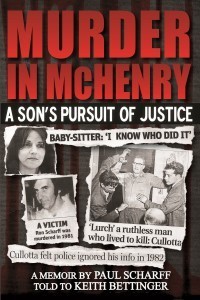
This is the Amazon link to the book Murder In McHenry by Paul Scharff and Keith Bettinger




